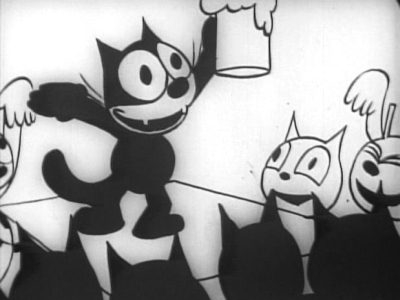
Craig White's Literature Courses
Terms & Themes
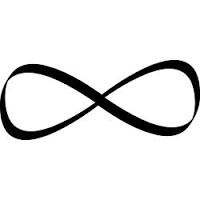 infinity symbol (also corporate logo for PlayStation, Microsoft, and others' products) |
|
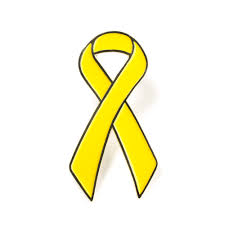 yellow ribbon = patriotism, faithful love, welcome home, U.S. Cavalry, forgiveness |
Symbols are among the most universal and characteristic actions or products of human culture, and therefore persistently meaningful devices in literature, art, and all media.
Symbols are basic to human consciousness but consciousness is complicated and so are symbols. Humans are unique as symbol-making creatures.
The term "symbol" may apply to many different phenomena. Like most human traits, symbols are flexible and adaptive to changing situations or different dimensions.
Everything our minds imagine or our voices speak, write, think, read, or process is a sequence, code, or network of symbols. Stories or narratives are a series of interacting symbols or symbolic functions essential to mimesis or humans' ability to imitate, create, or shape reality.
Symbols are always at work every day in human minds and environments.
|
In language, every word is a symbol. For instance, the word "cat" (whether spoken or written) isn't really a cat but a symbol or "sign" by which we refer to a cat. |
|
Social analysts sometimes divide modern humans into two categories:
![]() Those who are
manipulated by symbols (passive consumers of TV, music, advertising, popular art,
literature,
religion, and culture generally, celebrity worship, etc.), and . . .
Those who are
manipulated by symbols (passive consumers of TV, music, advertising, popular art,
literature,
religion, and culture generally, celebrity worship, etc.), and . . .
![]() Those who manipulate symbols (e.g., computer
programmers, writers of all kinds, visual and other artists, film and video
directors and editors, advertisers,
marketers, political consultants, preachers)
Those who manipulate symbols (e.g., computer
programmers, writers of all kinds, visual and other artists, film and video
directors and editors, advertisers,
marketers, political consultants, preachers)
Symbols' meanings can be as complex as the human mind or its society. Symbols' power often rises not from a single meaning but from their adaptability and variability in appealing to different people with different meanings, even as the images with which the symbols appear remains the same. (e.g., "cat" may symbolize cozy, cunning, cruel, cool . . . .)
The challenge of symbols for literature classes is that symbols can mean many things, but not just anything.
![]()
Understanding this flexibility of meaning within limits requires understanding two determining qualities of symbols:
1. A symbol's meaning is always part of a larger a context or code of other symbols—that is, symbols don't signify independently of other symbols but operate in a network of symbols.
|
For instance, the symbol "green" may change its meaning according to the following networks . . .
|
|
2. A symbol's meaning can be limited by its image. For instance, a green image cannot mean "hot," and the image of a blazing-red fire cannot mean "cold." A reader can't say that a red fire is cold just because the reader wants it so. If the reader wants to explain why a fire is cold to him or her, that reader must change the network or context of symbols so that the meaning somehow makes sense: "The night our house burned down it was freezing outside, and ever since then I never see a fire without feeling cold."
A challenge for symbols is when Literature students perceive symbols as having "hidden meaning." Such "hidden meanings" are often suggested by teachers offering interpretations of a symbol as part of a code that students miss—for instance, the central symbol of Nathaniel Hawthorne's The Scarlet Letter (the letter A) may mean Adultery, Angel, Able, or other A-words depending on who's perceiving the A and in what context. But these meanings aren't really "hidden"—they're just operating in different codes or contexts that students or readers may or may not perceive. (A successful reader doesn't find "one answer" or "one hidden meaning" for symbols but instead enjoys how many different things a single symbol may mean at once or in different situations—e.g., "gold" in an adventure story may mean different things to different characters, all of them true enough and all inter-related.)
Sometimes the power of a symbol is hidden but works on us anyway. Just because readers don't always perceive all the meanings of literary symbols doesn't mean that the symbols are not working on us anyway, though sometimes at immeasurable or unconscious levels. In everyday life we don't stop and think about symbols—we process them quickly to our own purposes, based on our experiences and preferences.
![]()
Symbols as elements of stories or narratives;
narratives or stories as sequential networks in which symbols interact
People live by stories or narratives, but what are stories made of? The standard answer is that stories are a meaningful sequence of actions or events, each of which may function as a symbols with a necessary function or meaning for guiding the story.
Quick example: In a Romantic comedy, a potential couple runs into a former boyfriend or girlfriend. What does the former boyfriend or girlfriend symbolize, and how does that symbolic meaning change or affect the direction of the story?
Everyday life is often seen as trivial instead of symbolic. But if a book or movie shows a character doing something everyday like fussing with a shoelace or eating a sandwich, that action must be an operative symbol in the narrative or the text is wasting the reader's time. If a story or text matters, it is automatically symbolic of something that already matters to us, or the text creates new meaning out of new combinations of symbols.
![]()
Definitions & examples of symbols:
Simplest equation: symbol = image + meaning
image = something that communicates to the senses; most often sight—the image aspect of a symbol is part of nature or material reality
meaning = "That which is indicated or expressed by a (supposed) symbol or symbolic action; spec. a message, warning, idea, etc., supposed to be symbolized by a dream, vision, omen, etc." (Oxford English Dictionary, def. 1a)
The meaning provoked by a symbol may be simply one thing to one viewer or reader, but another meaning to a different audience.
|
|
"A symbol is a word or object that stands for another word or object. . . . "For example a dove stands for Peace. The dove can be seen and peace cannot. . . . ." —All-American Glossary of Literary Terms: (The dove is an image; peace is the meaning. But in different contexts the same image, a dove, has symbolized love, communications, the Holy Spirit of the Christian Trinity (Mt. 3:16; Luke 3:22), which is the source of the meaning of peace, though also related to Genesis 8: 6-12, where Noah after the Flood releases a dove, which returns with an olive branch.) |
Other examples:
| American flag How does its meaning change in different environments? U.S. heartland: patriotism,valor,sacrifice, home Middle East: imperialism, aggression, foreigners, secular modernity (same image, different meanings) |
 |
|
Virgin of Guadalupe (As a symbol, this image symbolizing the Marian apparition to an Aztec can signify one, more, or all of the meanings below, depending on who's using or perceiving it.) Mexico independence maternity submission women's empowerment
|
 |
![]()
|
fire destruction cleansing warmth pain aspiration (Olympic Torch, Statue of Liberty) (They're all fires, but their meaning changes according to their contexts.) |
 |
![]()
|
water cleansing destruction rebirth baptism sex (getting wet in movies) |
 |
![]()
|
Star |
 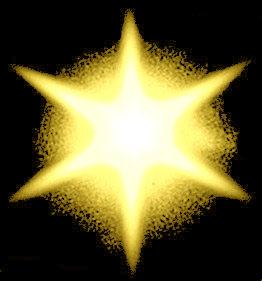  |
![]()
popular celebrities or politicians
|
|
 |
 |
 |
Symbols can't mean anything and everything, but they usually don't mean just one thing. The presidents pictured above symbolize many different things to both their supporters and their opponents. The celebrities pictured above symbolize beauty and daring to their fans, but to the un-hip they may represent transgression, distortion, effrontery, etc.
This multiplying and shifting quality keeps symbols alive, dynamic, and meaningful—-in evolutionary terms, symbols stay alive by adapting to new contexts and needs, or else they die and get buried in the past, as many symbols have.
![]()
All the symbols above are more or less public or universal symbols, but symbols can also be personal or private. For instance, a parent, teacher, or other figure in your own past can symbolize any number of qualities in your life-story: a good role model, a helper, repression, a light . . . .
![]()
More definitions
Oxford English Dictionary. 2.a. Something that stands for, represents, or denotes something else (not by exact resemblance, but by vague suggestion, or by some accidental or conventional relation); esp. a material object representing or taken to represent something immaterial or abstract, as a being, idea, quality, or condition; a representative or typical figure, sign, or token . . . .
Bedford Glossary of Critical Terms: symbol: something that, although it is of interest in its own right, stands for or suggests something larger and more complex—often an idea or a range of interrelated ideas, attitudes, and practices. / Within a given culture, some things are understood to be symbols: the flag of the United States is an obvious example, as are the five intertwined Olympic rings. More subtle cultural symbols might be the river as a symbol of time . . . . [W]riters often create their own symbols by setting up a complex but identifiable web of associations in their works.
A Handbook to Literature: Symbol A symbol is something that is itself and also stands for something else . . . as a flag is a piece of colored cloth that stands for a country. All language is symbolic in this sense . . . .
Virtual Salt Glossary of Literary Terms: Symbol. Something that on the surface is its literal self but which also has another meaning or even several meanings. For example, a sword may be a sword and also symbolize justice. A symbol may be said to embody an idea. There are two general types of symbols: universal symbols that embody universally recognizable meanings wherever used, such as light to symbolize knowledge, a skull to symbolize death, etc., and constructed symbols that are given symbolic meaning by the way an author uses them in a literary work, as the white whale becomes a symbol of evil in Moby Dick.
Thomas Fawcett, The Symbolic Language of Religion. Minneapolis MI: Augsberg, 1971.
28 [Symbols] have what Josiah Royce calls “surplus meaning,” . . . .
28 A symbol is able to refer to a variety of things at different times and places.
Ambiguity of water: healthfulness of cleansing; destructiveness of flood
28 E. Cassirer: “a genuine human symbol is characterized not by its uniformity but by its versatility.” [An Essay on Man, Yale UP, 1958, 132]
29 The “multiplicity of signification” is bounded by “the natural qualities of the symbol.” [J. Danielou, The Lord of History, Longmans Green, 1958, 132]

symbol of the Olympic Games
![]()
application to apocalyptic prophecy like Revelation
None of these suggestions are necessarily anti-religion, nor do they "disprove" scriptures like Revelation, which will live symbolically long beyond anything any current voice might say.
Instead, they explain one way religion works as literature, or vice versa. Religion expresses itself verbally (and visually) in symbols and narratives.
Prophecy always speaks in symbols that must be interpreted. Why? (Example: Nostradamus says something about "towers," which could refer to the World Trade Center, or to many other historical structures before or after.)
If the apocalypse is always imminent but never quite happens, the symbols by which the apocalypse is described must adapt to changing times.
For earlier or later times, the "Beast" or "Antichrist" might be (for different audiences) the King of the Turks, the Pope, Luther, Napoleon, Hitler, Stalin, Saddam Hussein, Osama Bin Laden, Pres. Obama, whomever the believers despise as "the other" or antagonist.
The ability of symbols to adapt to changing referents keeps symbols alive.
Prophecy succeeds mostly in retrospect. People can say Nostradamus predicted 9/11, but no one said so before 9/11.
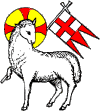
The Lamb of God, a symbol for Christ (as sacrifice,
but also connoting gentleness, innocence)
![]()
Other links used for examples of symbols
|
T-shirt with image of Guadalupe
arguing
the fish sign (The tone of this article is
ambiguous and |
|
|
 |
|
